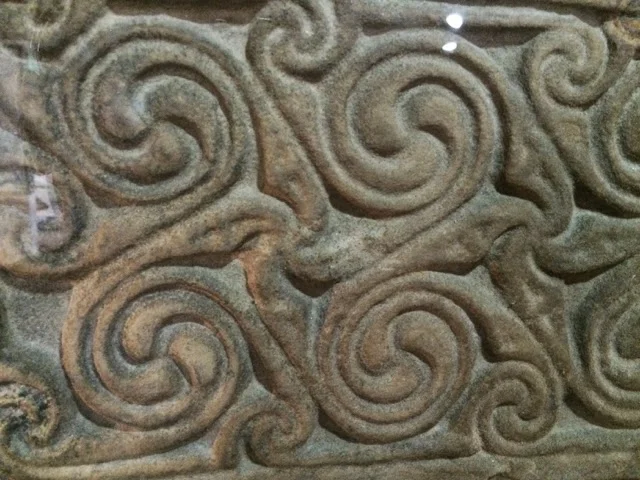After decades of assessing the attributes of inanimate objects in a direct and uncompromising way, I find myself in terrain where taking that path of least resistance only leads down a slippery slope to nowhere special. From a distance, the long way around appears to be inefficient and wasteful, but once the trip begins, the side tracks and stops along the way become the definition of the journey. The people met, the conversations had, the agreements made, are memorialized in the installation that’s left behind. They become the substance, if not the point, of the project. The public work now belongs to those who meander by, and will, I hope, become their memory touchstone.
Read MoreThe Pictish symbol for time depicts intertwined spirals, spooling outward in every direction from a centerpoint. They saw their movement through time as a dance with the past, in the present, with a nod to the future. For them, where each step is experienced looks and feels different from every other, but all are part of the same expanding destiny.
Read MoreThe whorling pattern of convoluted forms in the signet carved on the Cadboll Stone has a deep history. Before the pattern became emblematic of Picts culture, the earlier Celts employed a similar iconography in what is understood to be their graphic representation of time. If I think of the signet in terms of time, I see that for the Picts time was not linear. Time pulsed in a rhythm. Time unfolded and turned back on itself. The Cadboll signet lays out all of time’s manifestations in one picture. The concealed is present with the revealed.
Read MoreWhile visiting Scotland earlier this month I received a crash course in Pictish stone carving. The Picts lived north of what is now Edinburgh from the 1st to 3rd century AD. Little is known about them other than what can be deciphered from the system of symbols found carved on stones and engraved on metalwork. Nearly 200 stones survive, including the Hilton of Cadboll Stone that now resides in the National Museum of Scotland. After viewing the original Cadboll stone I met sculptor Barry Grove who was commissioned to carve a new stone, sited at the Cadboll Stone’s place of origin outside the royal burgh of Tain, just north of Inverness.
Read More


